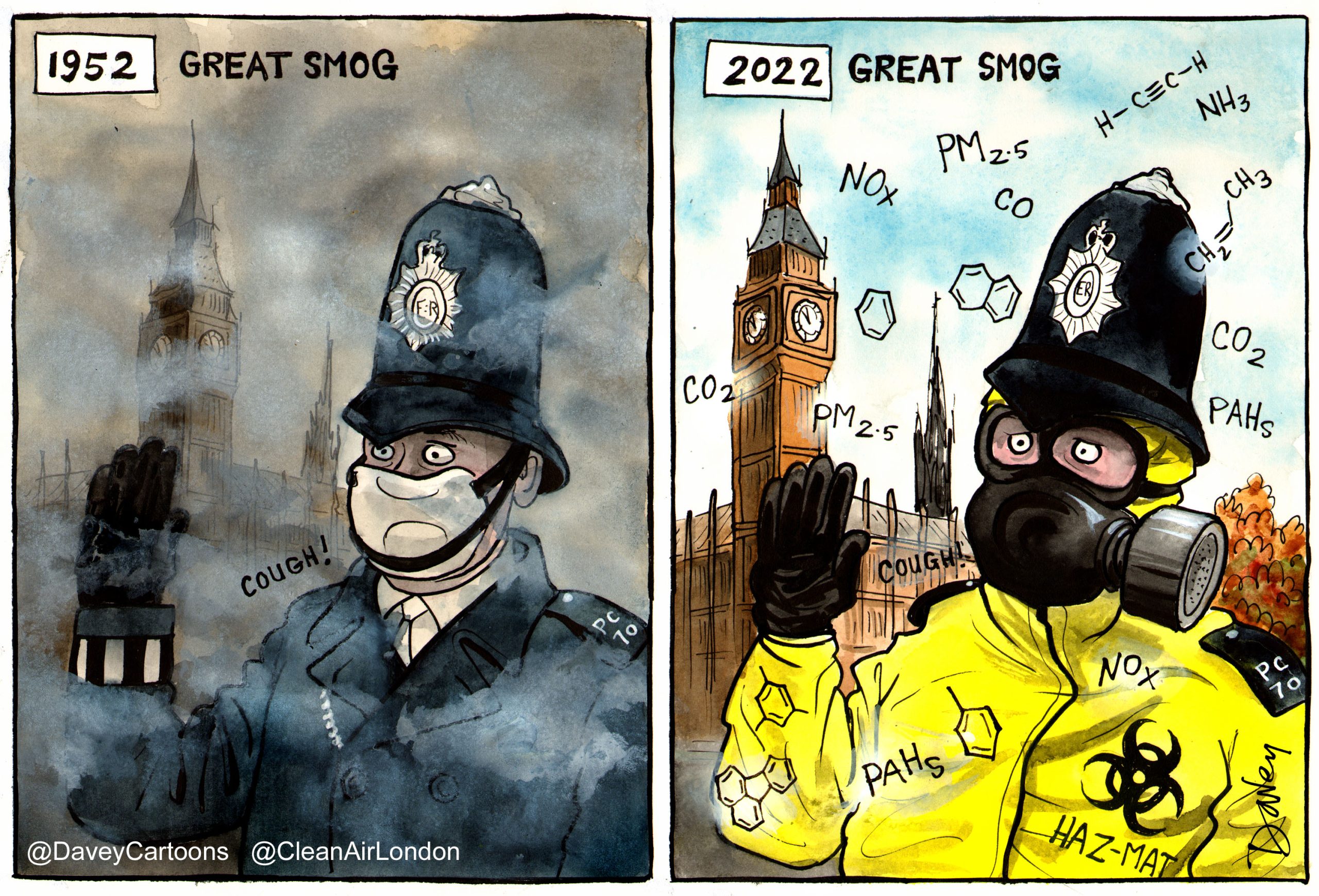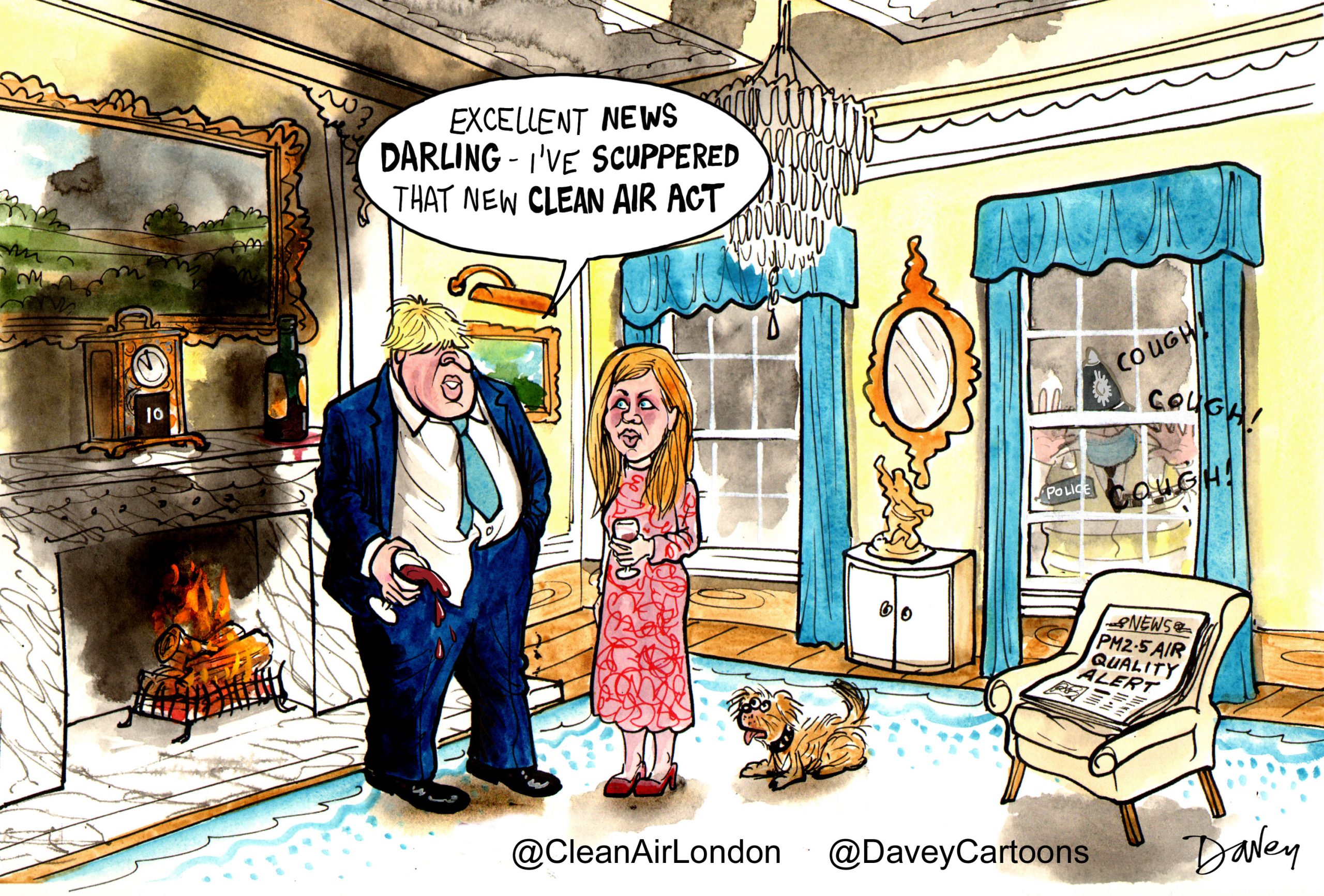Promises broken about informing the public about ‘tube dust’
Mayor of London ‘turning a blind eye’ to repeated warnings from scientists and others of the dangers of airborne particles including in underground rail systems
Mayor of London breaching ‘General transport duty’ to develop and implement policies for the promotion and encouragement of safe transport facilities
Dear Mayor Johnson
I wrote to you on 18 December 2011 on behalf of Clean Air in London (CAL) to raise serious concerns about air pollution in the London Underground.
Your Office asked Transport for London (TfL) to reply on your behalf. In TfL’s reply dated 9 January 2012, a number of assurances were provided, including:
i. Paragraph 5 on page 3: “[However,] as information on dust is already available on our website we will review this information and in future will include the results of our routine dust measurements together with an explanation of what they mean.”
ii. Paragraph 9 on page 4: “We commission regular monitoring, by a third party (4Rail Services), of air quality in the London Underground.”
iii. Paragraph 10 on page 5: “As noted in [question 5], we will put relevant information on the TfL website which will provide assurance to our customers that dust on the Underground is highly unlikely to be damaging to the health of our passengers or staff.”
Despite these categoric reassurances more than a year ago, CAL has found no information about ‘tube dust’ on the TfL website whether about levels of air pollution in the London Underground or its possible health effects.
In MQT answers, you have said:
- MQT 3330/2011, 16 November 2011
“As the figures below show, the levels of tunnel dust remain stable compared with those last reported in my answer to question 2546/2011. All readings are less than one third of the Health and Safety Executive limit for general dust, and exposure remains safe for both staff and customers.
Year Dust level in milligrams per metre cubed (mg/m3)
2009/10 0.030 to 1.270
2010/11 0.030 to 1.230
“Dust levels vary by location which is why a range is given.”
- MQT 0282/2012, 25 January 2012
“[London Underground] regularly monitors levels of dust on the Tube within two parameters: air quality experienced by train staff and by station staff. Measurements show that these levels are consistently below the guidance levels recommended by HSE, Institute of Occupational Medicine and the Trade Union Congress.”
In CAL’s opinion, the above statements by you raise several questions including:
- Why are you making (and/or relying on?) comparisons between static levels and WELs? As CAL understands it, the monitoring done for TfL is for static levels of dust which cannot be compared directly with the HSE’s Workplace Exposure Levels (WELs) or the WELs suggested by the Institute of Occupational Medicine. These levels are expressed over a specified period of time (usually eight hours). Has any testing been done across the Tube network over an eight hour or other time period and if so what?
- Why did you not mention monitored levels around those suggested by IOM and the TUC?:
- the HSE updated its guidance on Workplace Exposure (WEL) limits (EH40/2005 Workplace Exposure limits) on 19 December 2011 for respirable dust and inhalable dust to 4 mg/m3 and 10 mg/m3 respectively;
- the IOM “[suggested] that, until safe limits are put in place, employers should aim to keep exposure to respirable dust below 1 mg/m3 and inhalable dust below 5 mg/m3” (IOM, 5 May 2011); and
- “Because of the serious health risks that exposure to dust can cause the TUC believes that unions and union health and safety representatives should try to ensure that employers follow a precautionary standard of 2.5 mg/m3 for inhalable dust (as opposed to the current 10 mg/m3 standard) and 1 mg/m3 for respirable dust (as opposed to the current 4 mg/m3 standard) for all general dust and dusts where there is not a lower [Workplace Exposure Limits].” (TUC, 1 September 2011)
In other words, the suggestions from IOM and the TUC for respirable dust are one-quarter not one-third of the level recommended by the HSE i.e. illustratively 1.000 mg/m3 compared to 1.230 mg/m3 recorded in static levels.
- Were you correct to give an absolute assurance that ‘exposure remains safe’ when it is around or near some guideline levels in some locations?
As CAL understands it, scientists have found no safe level for exposure to airborne particulate matter. Indeed, CAL’s understanding is that exposure to ‘dust’ can adversely affect health and it is important to keep dust concentrations as low as possible. In CAL’s opinion, it is wrong therefore for you to say or imply that such pollution is ‘safe’ when it is around some guideline levels in some locations: it is a bit like saying it’s safe to drive at the speed limit (in some countries).
As recently as 30 and 31 January 2013, the World Health Organisation said:
“In the absence of a threshold and in light of linear or supra-linear risk functions, public health benefits will result from any reduction of PM2.5 concentrations whether or not the current levels are above or below the limit values.” See page nine.
and:
“Specifically, commuting can increase exposures to particulate matter, NO2, CO and benzene, and is a major contributor to the exposure to ultrafine particles, black carbon and some metals, most importantly Fe, Ni and Cu in underground rail transport systems.” See page 20.
You may be aware the Daily Mail published an article this week titled: Travelling on the Tube ‘could be bad for your health because the air is rich in toxic dust’:
Kings College London published the results of an investigation into public exposure to air pollution on 16 January 2013. It showed high cumulative exposure to air pollution for a pensioner largely from the London Underground (listen to podcast).
http://www.londonair.org.uk/london/reports/South-East-London-Air-Quality-Community-16-01-13.pdf
Conclusions
Section 141 (1) of the Greater London Authority Act 1999 defines your ‘General transport duty’ inter alia as:
“The Mayor shall develop and implement policies for the promotion and encouragement of safe, integrated, efficient and economic transport facilities and services to, from and within Greater London.”
For the reasons set out above and in its earlier correspondence to you, CAL considers that you are not developing and implementing policies for the promotion and encouragement of safe transport facilities on the London Underground. CAL emphasis.
Worse, CAL’s has come to the view that you are ‘turning a blind eye’ to a potentially significant public health risk for vulnerable Londoners and others who use the most polluted parts of the London Underground.
CAL considers there is an urgent need to investigate inter alia
i. actual levels of air pollution in the London Underground and trends
ii. a range of expert opinions on possible health impacts from exposure to it; an
iii. whether and if so what warnings might be issued to the most vulnerable people.
Please ensure that information and advice about ‘tube dust’ is published prominently and urgently on the TfL website.
I would also welcome your response please to the questions raised above and an assurance that you will look again at this issue.
With best wishes.
Yours sincerely
Simon Birkett
Founder and Director
Clean Air in London
Previous articles and letter
1. High levels of ‘tube dust’
https://cleanair.london/sources/high-levels-of-tube-dust/
2. Tube dust is not ‘safe’
https://cleanair.london/hot-topics/tube-dust-is-not-safe/
3. Letter from [Sir] Peter Hendy dated 9 January 2012
4. ‘Review of evidence on health aspects of air pollution’ dated 30 and 31 January 2013
http://www.euro.who.int/__data/assets/pdf_file/0020/182432/e96762-final.pdf
Pollution Check
London Underground (9 December 2011)
CAL 236 PC5_091211_Tube 250413
Marathon day and other smog episodes in 2012 (Various dates)
PC24_120812_Marathon Day compared to smog episodes with times in 2012
Taxi ranks (26 January 2012)
Trades Union Congress factsheet issued 26 April 2013
http://www.tuc.org.uk/workplace/tuc-22147-f0.cfm
CAL 236 Response on Tube Dust 280513
CAL 236 HSE Construction-Dust-not-just-a-Nuisance-Seminar-Presentation-2013_Tube dust










